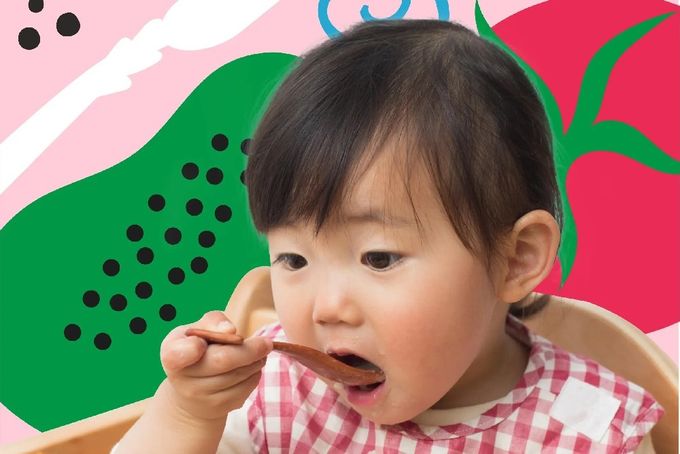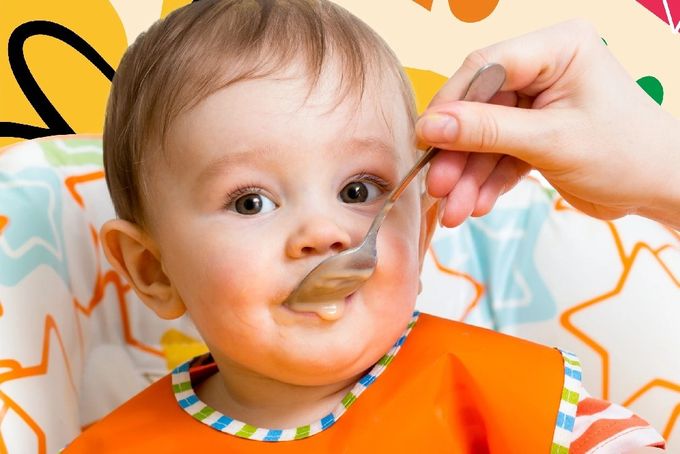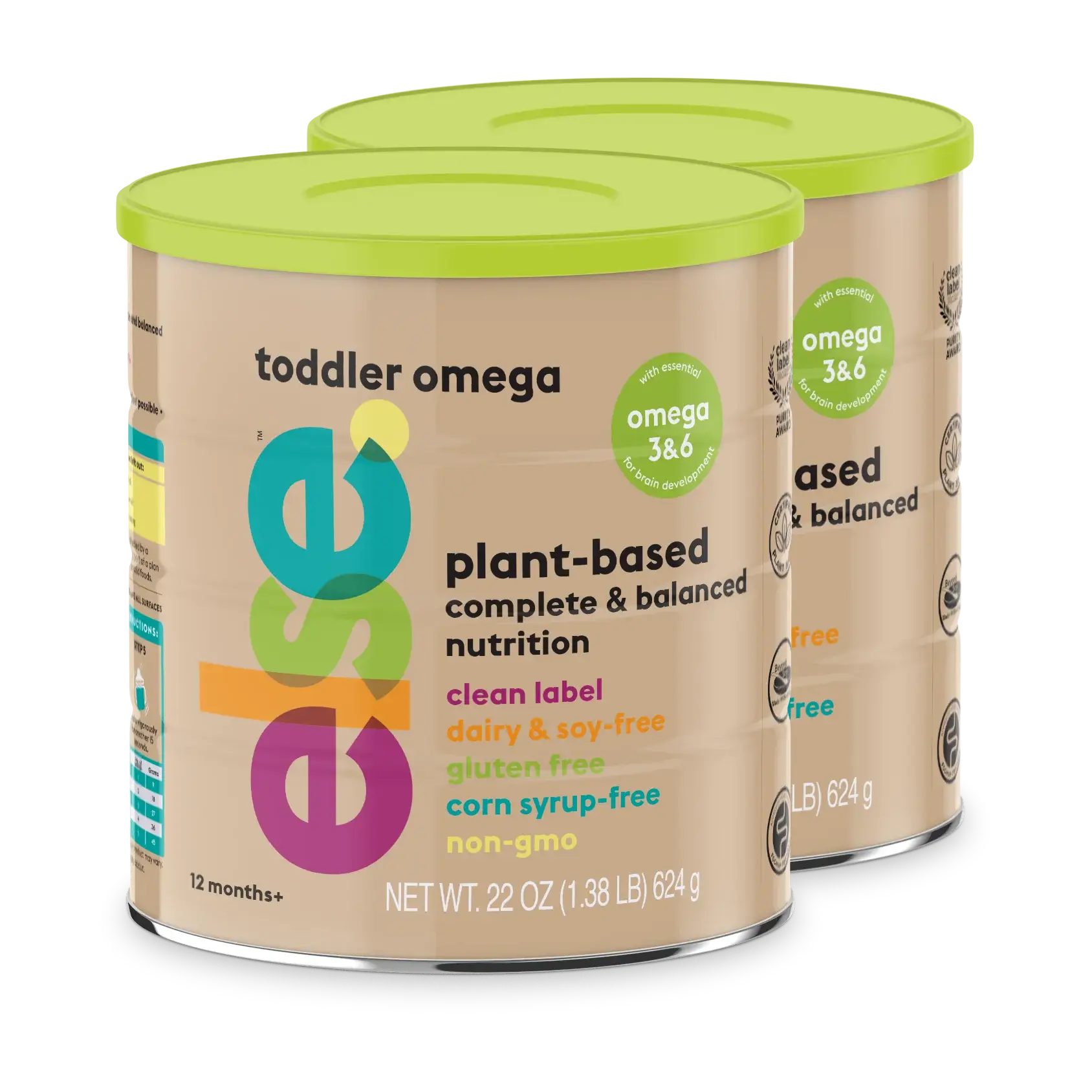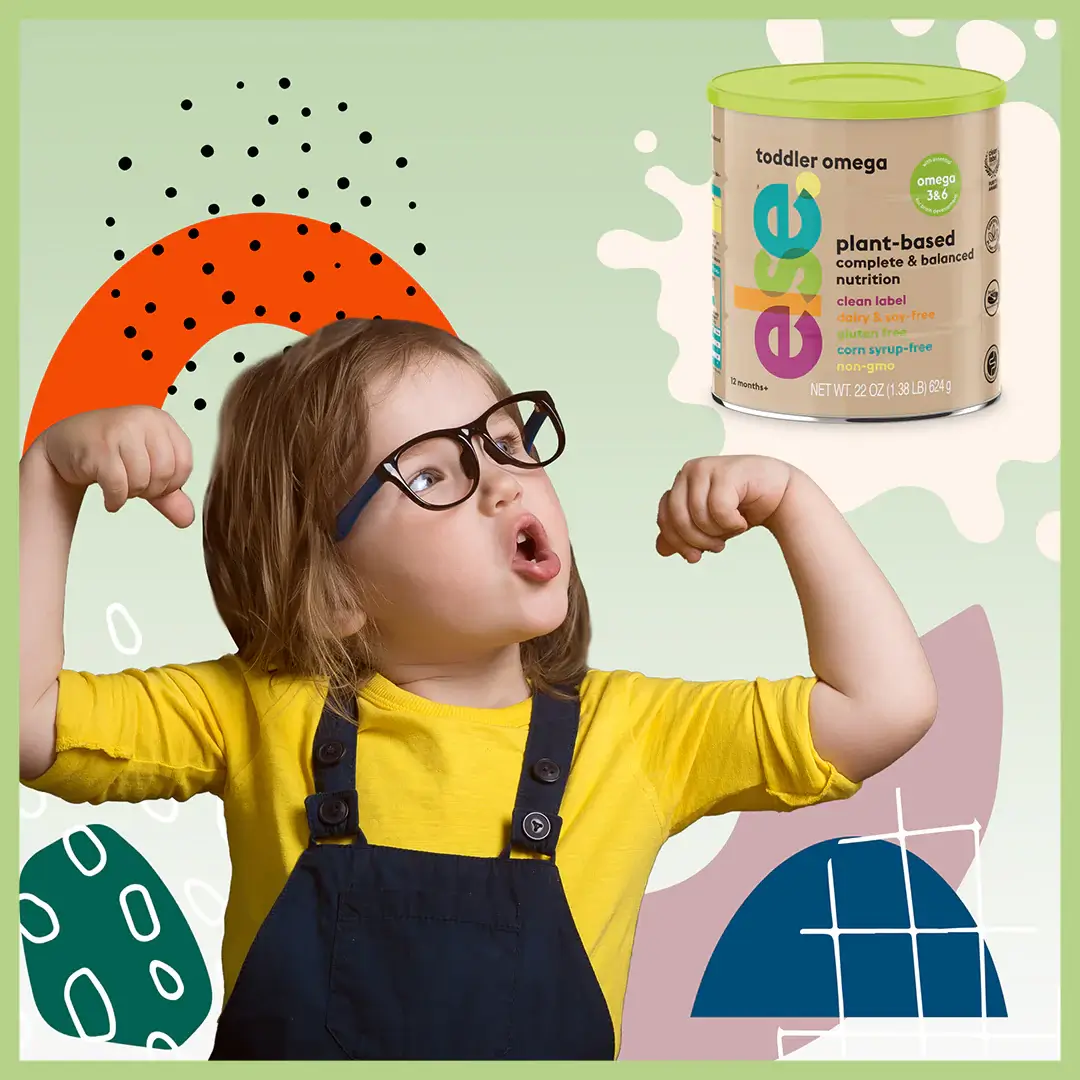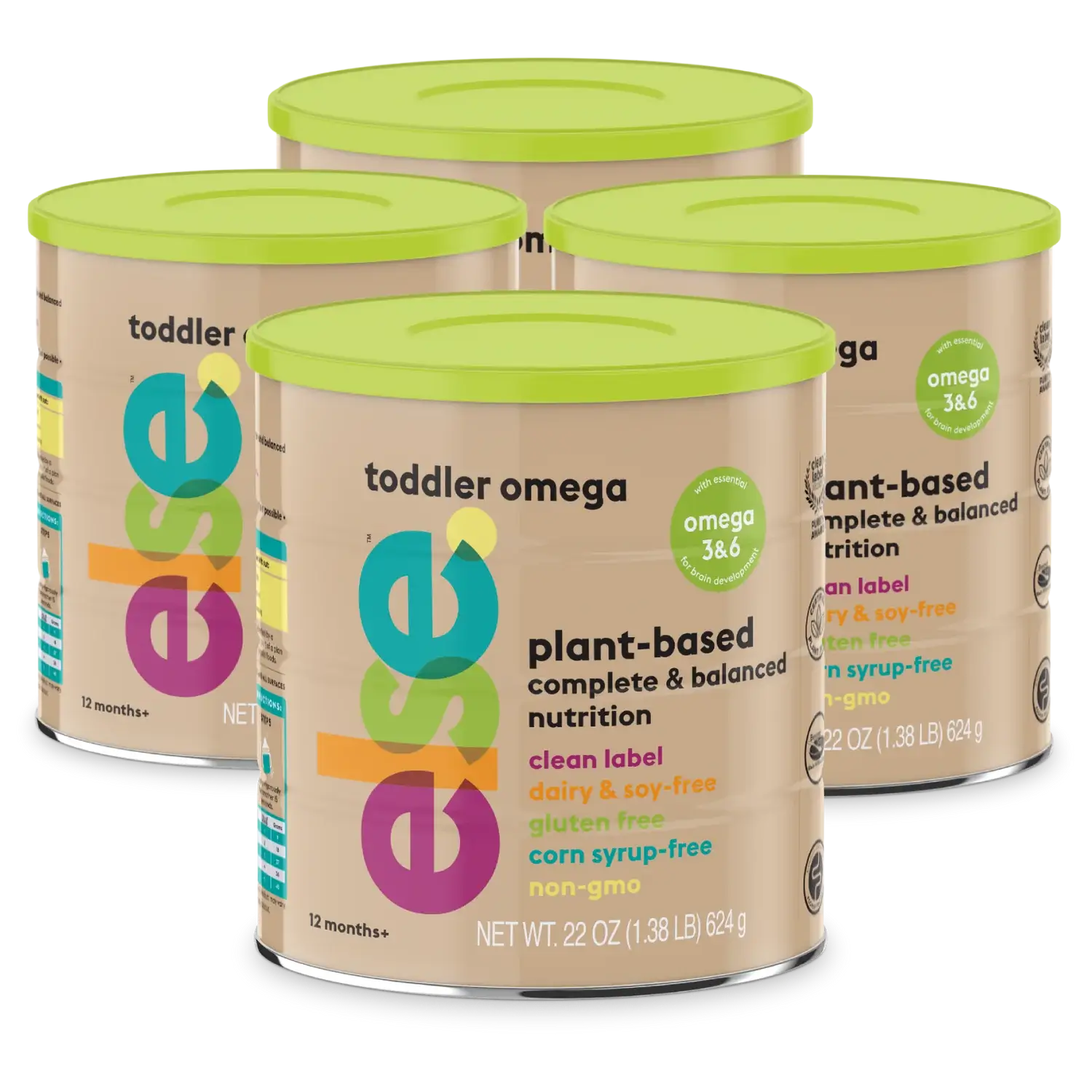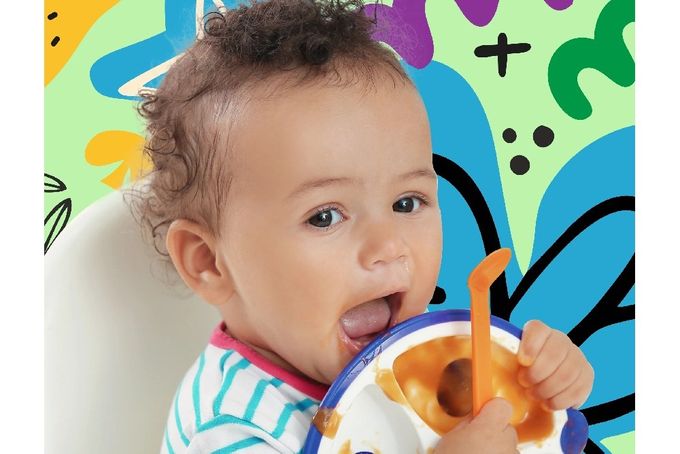The Best Ways to Include Healthy Fats in Your Child's Diet
Updated October 2, 2024

Including healthy fats in your diet can be a struggle. Don't worry, we got you.
The health benefits of fats, in general, have a long history of debate, especially in western cultures. However, when it comes to the nutrition needs of babies and young children, getting enough fat in their diet is critical.
Understanding why kids require fat is important, but knowing which types of healthy fats for kids to prioritize and how to add them to meals makes the biggest difference in a child’s short and long-term health outcomes.
» Make sure your little one is getting all the best types of fats with this complete nutrition drink
What are the types of fat?
Dietary fat is an essential nutrient for everyone, but not all fats are the same. There are three types of fat: saturated, unsaturated, and trans fats. Each of these has unique properties which translate to very different health effects depending on how much they make up of one’s diet pattern.
» Learn everything about essential nutrients for your baby
Saturated fats
The most obvious characteristic of saturated fat is that it’s solid at room temperature. The main sources of saturated fat are animal products, including meat, fish, poultry, dairy, and eggs. Animal-derived ingredients also contribute saturated fat to prepared foods like many baked goods, cakes, cookies, and some packaged snack foods.
However, tropical oils like coconut, palm oil, and cocoa butter are a few rare plant based sources of saturated fat. These are often found in certain non-dairy butter, whipped toppings, and creamers. You can also purchase these on their own in the canned or baking foods sections.
» Read here more on rich in saturated fats foods and how to incorporate them in your child's balanced diet
Unsaturated fats
While saturated fat is solid at room temperature, unsaturated fat is liquid. This type of fat is primarily found in plant based foods and plant-derived oils.
There are actually two subcategories of unsaturated fats, which include the following:
- Monounsaturated fats: The main sources of these fats include nuts, avocados, and plant oils like peanut, olive, and canola.
- Polyunsaturated fats: These fats are found primarily in safflower, corn, sesame, sunflower, and soybean oils, as well as seafood. The two types of polyunsaturated fats are omega-3 fatty acids, found in walnuts, flaxseed, fatty fish, and canola oil, as well as omega-6 fatty acids, found mostly in liquid vegetable oils.
It’s important to recognize that all fat-containing foods actually have both saturated and unsaturated fats. It’s just that the percentage of each varies, and this is what determines how certain foods are categorized. For instance, coconut oil contains both saturated and unsaturated fat, but the majority is saturated, so this is considered to primarily be a saturated fat source. On the other hand, avocado contains predominantly unsaturated fat, so it’s placed in that category.
» Learn more about fat-rich plant based nutrition for toddlers and why is it so healthy
Trans fats
Trans fats are the worst type of fat for health, as they offer no benefit at all, and even increase the risk for things like heart disease. Some of them are naturally found in certain animal products, like meat and dairy.
However, the majority of trans fats have historically been man-made and added to packaged snack products, margarine, and desserts because of their ability to make these types of foods flaky and crispy.
An indication that a packaged food contains trans fats is if it lists shortening or partially hydrogenated oils on its ingredients list. Fortunately, the FDA removed the “Generally Recognized as Safe” label from trans fats and no longer allowed them to be added to new foods as of January 1, 2020. Still, it’s helpful to know where these have been found traditionally and why they’re not a healthy source of fat.
Why do kids need fats?
Fats are an essential component of all diets but are particularly crucial for babies and young kids. This is because fats support normal, healthy growth and development, and childhood is a time when these things happen quickly.
First, fats make meals more satisfying and filling. If you’re familiar with the idea of children being snack monsters, one reason for this is often because the last meal or snack they ate didn’t contain enough fat.
When kids don’t get enough fat at a meal, they’re often more prone to feeling hungry before the next meal. You may notice a difference in your child’s between-meals appetite when they’ve eaten something like a bowl of crackers versus a bowl of apple slices with peanut butter.
Second, fats are a critical component of healthy brain development. The central nervous system actually requires fat to grow and function properly, so it’s important to make sure your child is provided with regular opportunities to consume it. While unsaturated fat, like DHA, accumulates in the brain around age 18, it’s most aggressively collected throughout pregnancy until age 2 years old. This makes regular sources of healthy fat incredibly important for babies and toddlers.
Furthermore, fat is required for the absorption of fat-soluble vitamins. These include vitamins A, D, E, and K. Unlike water-soluble vitamins, which dissolve in water and are excreted from the body on a daily basis, fat-soluble vitamins need fat to be absorbed and stored in the body.
» Discover how much fat daily your little one needs
Health effects of dietary fat
The main difference between saturated, trans, and unsaturated fats is how they affect health outcomes.
A high intake of saturated fats, as well as trans fats, is known to increase the risk for heart disease. These types of fats can promote inflammation and clogged arteries, which is associated with high blood pressure, as well as a higher risk for strokes and heart attacks. As such, the American Heart Association recommends limiting saturated fat intake.
On the other hand, unsaturated fats have a protective effect on heart health. Unsaturated fats can also help reduce excess inflammation and lower cholesterol levels. Studies show that replacing saturated fats with unsaturated fats in the diet can greatly improve heart health.
Think about the types of fats that make up the majority of your child’s diet. Are they unsaturated or saturated? Are there areas where you can replace saturated fats with healthy unsaturated ones instead?
» Read more about the most important types of fat for your child's diet
What fats should kids eat?
Fat can be found in a wide variety of foods, but not all fats are healthy choices, especially for growing children. Most of us are not strangers to dietary fats in our diets, but this doesn’t mean we’re always eating the healthiest ones. In turn, many kids grow up eating more unhealthy fats than healthy ones, depending on what has the most presence in their household.
The best sources of dietary fats for kids are unsaturated fats, which can be found in a variety of foods that you may already enjoy in your home.
On the other hand, it’s best for kids to minimize foods that are high in saturated fats in order to best support long-term health and get the most nutritional benefit from fat sources.
How can I add healthy fat to my kid's diet?
A good practice is to include a healthy fat at every meal and snack for kids. This allows many opportunities to eat fats, while also exposing children to them more frequently. More exposure helps normalize foods and make them a regular, expected part of a child’s diet.
Some ideas for including more healthy fats in your child’s diet include:
- Adding chia, flax, or hemp seeds to smoothies
- Blending avocado into smoothies, basil pasta sauce, or homemade chocolate pudding for extra creaminess
- Adding avocado slices or cubes to taco soup, in burritos, or on enchiladas
- Drizzling extra virgin olive oil on top of roasted vegetables
- Sauteing veggies and tofu in avocado oil
- Almond butter and jam sandwiches
- Spreading peanut butter on waffles or pancakes
- Making energy balls with white beans, oats, dates, maple syrup, and peanut butter
- Pulverizing walnuts with nutritional yeast, salt, and olive oil to make vegan parmesan cheese topping for pasta
- Use full-fat fortified soy or pea milk in smoothies, sauces, soups, and recipes for baking
» Try this nutritious unsaturated fat-rich blueberry lemon pancakes
If you’re using plant oils to add fats to your child’s diet, there are a few things to remember about their best uses. The best oils for baking offer a neutral flavor, such as sunflower, canola, and avocado oil.
Stir-frying or sauteing veggies require oils that can stand higher heat before reaching their smoke points, such as sunflower, canola, peanut, and avocado oil. Extra virgin olive oil can be used for these purposes too, but also works best as a finishing oil for salads, roasted vegetables, and dips for bread.
What are the top 5 healthiest fats to eat?
There are plenty of healthy fats to choose from that can be used in kid-friendly meals and snacks. If you’ve been wondering what the healthiest fats are, here are 5 of the best ones to start adding to your grocery list and your child’s meals.
1. Avocado
Avocados are creamy, delicious, a great source of nutrients like folate and other B vitamins, magnesium, potassium, and copper. Each half of an avocado provides around 2 grams of protein. Furthermore, avocados are rich in healthy unsaturated fats. An average avocado contains nearly 30 grams of total fat, which is made up of approximately 4 grams of saturated fat, 20 grams of monounsaturated fat, and 4 grams of polyunsaturated fat. » Make this yummy strawberry avocado smoothie for your kid to boost their unsaturated fat intake
2. Plant oils
While plant oils often receive criticism for being processed food, they’re actually good fats for toddlers and little kids. Children have tiny tummies and often go through periods of low appetite, and just a small amount of vegetable oils can provide a substantial amount of healthy fats.
Keep in mind that some plant oils are better than others in terms of nutrition and quality. Choose ones like extra virgin olive oil, avocado oil, sesame oil, and flaxseed oil. Use them in things like dressing, sauteing, and roasting vegetables, or using them as a dip for bread.
3. Nuts
Note that nuts in their whole form are a choking hazard for kids underage 4-5 years old. However, for babies and toddlers, you can pulverize these in a blender with some water to make a thin drizzle for things like strips of toast and bananas.
For kids who are a little older, you can try grinding nuts into a dry powder to sprinkle on pasta or mix into foods like oatmeal and yogurt. Cashews are naturally creamy, neutral nuts that work well to make cashew cream to use as a soup thickener or vegan cheese sauce.
» Learn everything you need to know about peanut butter introduction
4. Seeds
Avoid things like sunflower or pumpkin seeds in their shells with kids, as these are a choking hazard. Instead, focus on varieties like chia, flax, and hemp seeds as good fats for kids. These are packed with high-quality protein, an array of vitamins and minerals, as well as healthy unsaturated fats. Plus, they’re incredibly versatile. You can add these to smoothies, sprinkle over breakfast dishes and desserts, or add to batters when making muffins, pancakes, waffles, or bread. You can also blend shelled sunflowers into sunflower butter and thin it into a drizzle with water to pour over things like toast strips or pancakes.
» Read more about other nutritive advantages of seeds
5. Olives
Olives are interesting food for many kids to be exposed to, offering a unique flavor and texture. They’re a great source of unsaturated fats and can be easily chopped and added to a number of recipes. Chopped olives work well in soft pasta dishes, sandwiches, and wraps. Whole olives are fun for little kids to stick on their fingers. You can offer your child a variety of olives to try, like black olives, kalamata, and green olives.
» Ensure your child gets enough unsaturated fats with this yummy toddler omega formula
Does my child need to eat fish?
Fatty fish, such as tuna, salmon, halibut, and mackerel, are among the richest sources of unsaturated fats on the planet. However, if your family doesn’t eat fish or animal products, don’t worry. There are plenty of other plant based sources of fat that you can include in your child’s diet, like the ones listed above.
Healthy fat supplements
It’s important to keep in mind as you rotate fats into your child’s diet that some plant foods are better sources of healthy fat than others.
Flax seeds are a great source of alpha-linolenic acid, or ALA, which is a precursor to the other omega-3s, DHA, and EPA. However, the conversion rate from ALA to EPA and DHA in the body is very low, so it’s best not to rely on these as the sole sources of good fats for kids.
In the case of plant based kids, it’s a good idea to consider adding a plant based omega-3 supplement in addition to healthy dietary fat sources.
The most popular omega-3 supplements, which often contain EPA and DHA, are fish or krill oil. However, there are also plant based alternatives that use algae instead, which are becoming more widely available and easier to find.
Plus, these supplements come in a number of forms that are appropriate for kids of all ages. For instance, you can find plant based omega-3 supplements in the liquid form taken by spoon or dropper, or in chewable gummy form. These usually come in flavors kids love.
» Discover why are fat-rich supplements key to a child's healthy weight gain
How much healthy fat should my child eat?
For healthy brain development, infants and toddlers need 30-40% of their total daily calories to come from fat. In fact, total fat intake should not be below 30% of calories before a child turns 2 years old. This doesn’t mean you have to count calories and fat grams to make sure your child is getting enough, but understanding the general amounts can be helpful.
Kids who are 2-3 years old need somewhere between 1,000-1,400 calories per day, depending on their activity level. Based on this range, that would mean that around 300-500 of those calories should come from fats.
You can also translate calories into fat. One gram of fat provides 9 calories. This comes out to 33-55 grams of fat based on the above calorie needs for toddlers.
Below are some examples of fats for kids:
- ½ an avocado: 15 grams
- 2 tablespoons peanut butter: 16 grams
- 2 tablespoons almond butter: 16 grams
- 1-ounce chia seeds: 9 grams
- ¼ cup flax seeds: 17 grams
- 3 tablespoons hemp seeds, hulled: 15 grams
- 1 tablespoon extra virgin olive oil: 13 grams
- 1 tablespoon sesame oil: 13 grams
- 1 tablespoon avocado oil: 14 grams
- ¼ cup ground walnuts: 13 grams
- ¼ cup black olives: 4 grams
Regardless, it’s most important to think about healthy fat sources in your child’s overall diet. Rather than counting fat grams at each meal, prioritize offering a variety of fats throughout their day.
Healthy fats for kids
Healthy fats are a critical part of a child’s diet. They support the normal growth and development of a child’s brain and central nervous system, help keep them satisfied and full between meals, and offer protective effects for heart health. While fish and seafood may be the most well-known sources of unsaturated fatty acids, they’re not the only ones.
If your child follows a plant based diet, you can find plenty of healthy fats in foods like nuts, seeds, olives, vegetable oils, and avocados. Use these in foods ranging from smoothies to pasta dishes to tacos, soups, salads, and sandwiches. Healthy sources of fat should not be restricted in the diets of young kids, so offer these types of foods regularly to support your child’s growth and development.
*The content and advice provided in this article is for informational purposes only and is not a substitute for medical diagnosis, treatment, or advice for specific medical conditions. Always consult a pediatrician to understand the individual needs of your child.




